The Close Encounter concept has been introduced by ufologists, people who believe in ufo’s and aliens. You will not be surprised that I don’t, although, to be honest, the Spielberg movies E.T. and Close Encounters of the Third Kind, belong to my absolute favourites….:-)
The close encounters in this blog post are different and more prosaic . Not between humans and aliens, but between spacecraft and “celestial bodies”. In the past fifty years hundreds of close encounters have taken place, with spacecraft flying by, orbiting or even landing on planets, moons, comets and asteroids in in our solar system. If you are interested in the whole list (314! and counting), surf to NASA’s National Space Science Data Center and select “Planetary Science”.
In this year there will be two memorable and exciting close encounters.
DAWN
Next week ( 6 March), the Dawn spacecraft will enter orbit around the asteroid Ceres. Here is an artist impression of Dawn and its travel to Ceres, starting already in 2007
The asteroid belt is located between the orbits of Mars and Jupiter. Ceres is, with its diameter of 950 km, the largest of the asteroids. When it was discovered in 1801, it was considered a planet for some time. As you see, on its way to Ceres, Dawn has first explored Vesta, the second-largest asteroid (diameter 525 km). Here is a composite image of Vesta taken by Dawn. Note the three craters, nicknamed the “snowman” and the “bump” at the south pole, a mountain twice as high as Mount Everest…:-)
Dawn left Vesta in September 2012 and is now closing in on Ceres. Here is a picture taken by Dawn ten days ago, on 19 February. Note the two bright spots. The scientists have no clear idea yet what they are, and of course they are getting excited…:-)
Ceres is the final destination of Dawn. The coming months it will explore the surface of Ceres from various distances and finally settle down in a stable orbit (July 2015). You can follow Dawn on the Dawn Blog
NEW HORIZONS
On 19 January 2006 the New Horizons spacecraft was launched from Cape Canaveral. Destination: Pluto, at that time still the ninth planet of our solar system. But not for long, because later that year Pluto was degraded to the status of dwarf planet, together with Ceres. The left picture shows the trajectory of New Horizons, with its actual position on 28 February, the right picture gives an artist impression of the spacecraft closing in on Pluto and its moon Charon.
After passing Jupiter in 2007, the spacecraft has gone into hibernation for considerable times, to save energy. Every now and then waking up to let Earth know that it was still alive…:-). Last year in December, it became fully awake again.
As you see, Pluto is an outsider, with its very elliptical orbit. We know consider it a member of the Kuiper Belt. The spacecraft will fly by on 14 July this year and come as close as ~ 10.000 km! How will Pluto look like? Here is an artist impression of Pluto’s surface, its moon Charon and the Sun. Yes, that is our Sun, not much more than a bright star. Communication with New Horizons takes more than 4 hours, one way.
If the spacecraft keeps functioning, we will know a lot more about Pluto after the fly by. Exciting!
New Horizons will not go into orbit, just fly by. With the little fuel left, it will try to visit a few more members of the Kuiper Belt, and then leave our solar system, like the two Voyagers before. But that is a topic for another post.
ROSETTA
One more memorable event in 2015. I have reported a few times already about Rosetta, now in orbit around the comet 67P. This comet will reach its perihelion (closest to the Sun) in August this year. Already part of the comet is evaporating (forming the famous “comet tail”). Rosetta is still exploring the comet from various distances. The left picture, taken from far, shows the evaporation. The right picture is a close-up from the surface, taken from a distance of 8.9 km only!
The location of the Philae lander is still not accurately known. The scientists are hoping that soon this lander will get enough sunlight (it is probably in the shade of a rock wall) and will wake up again. Let’s keep our fingers crossed..:-)

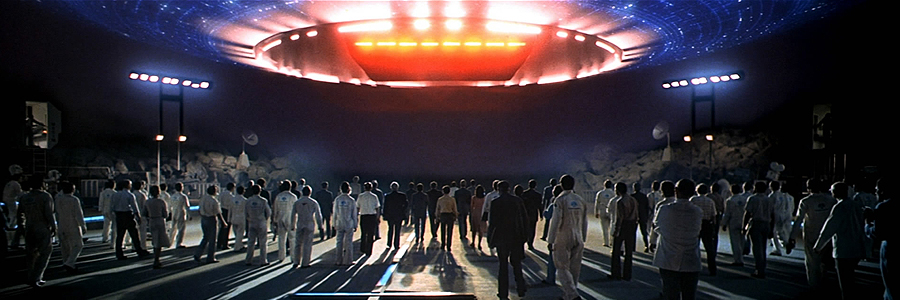
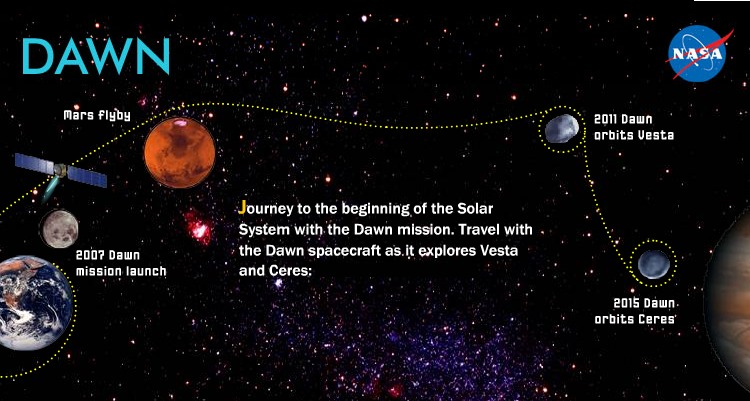
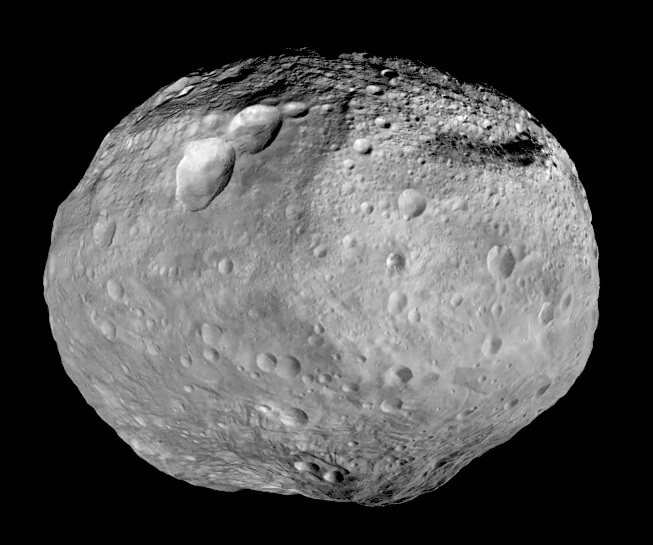
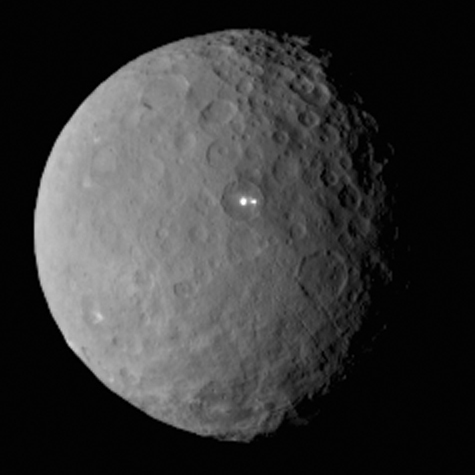
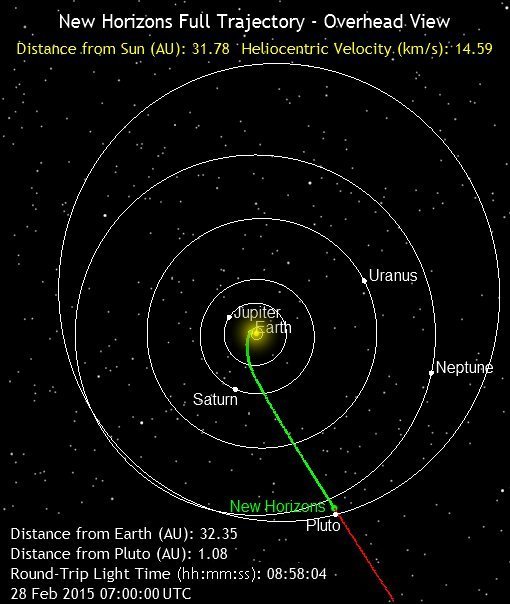
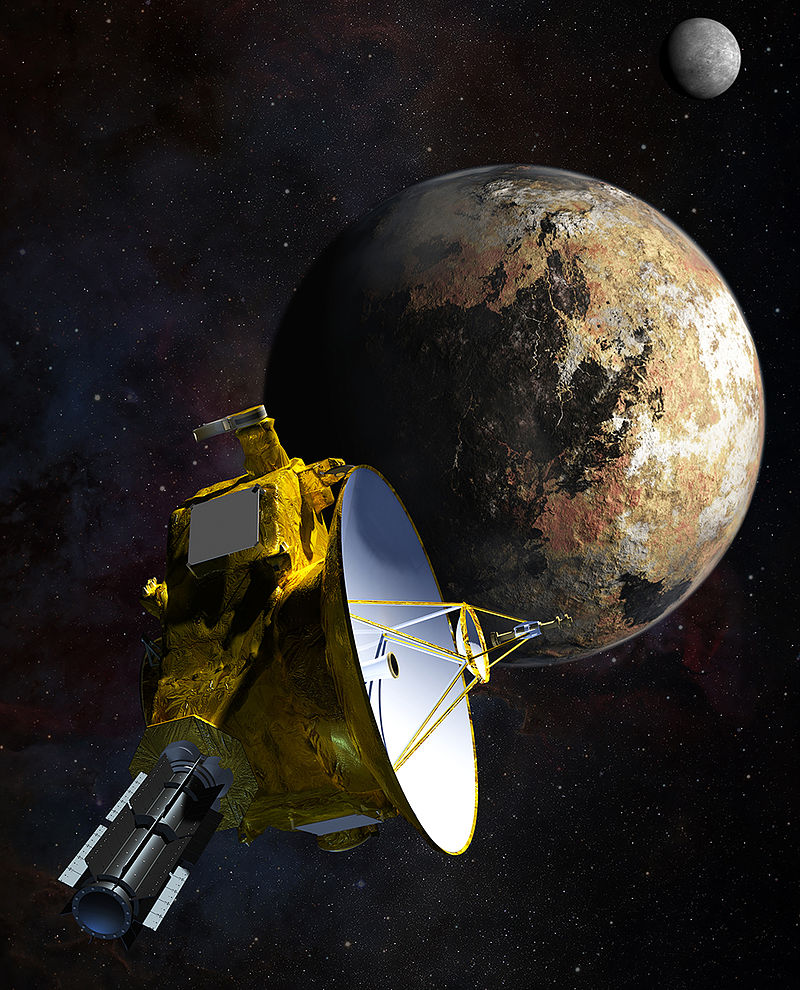
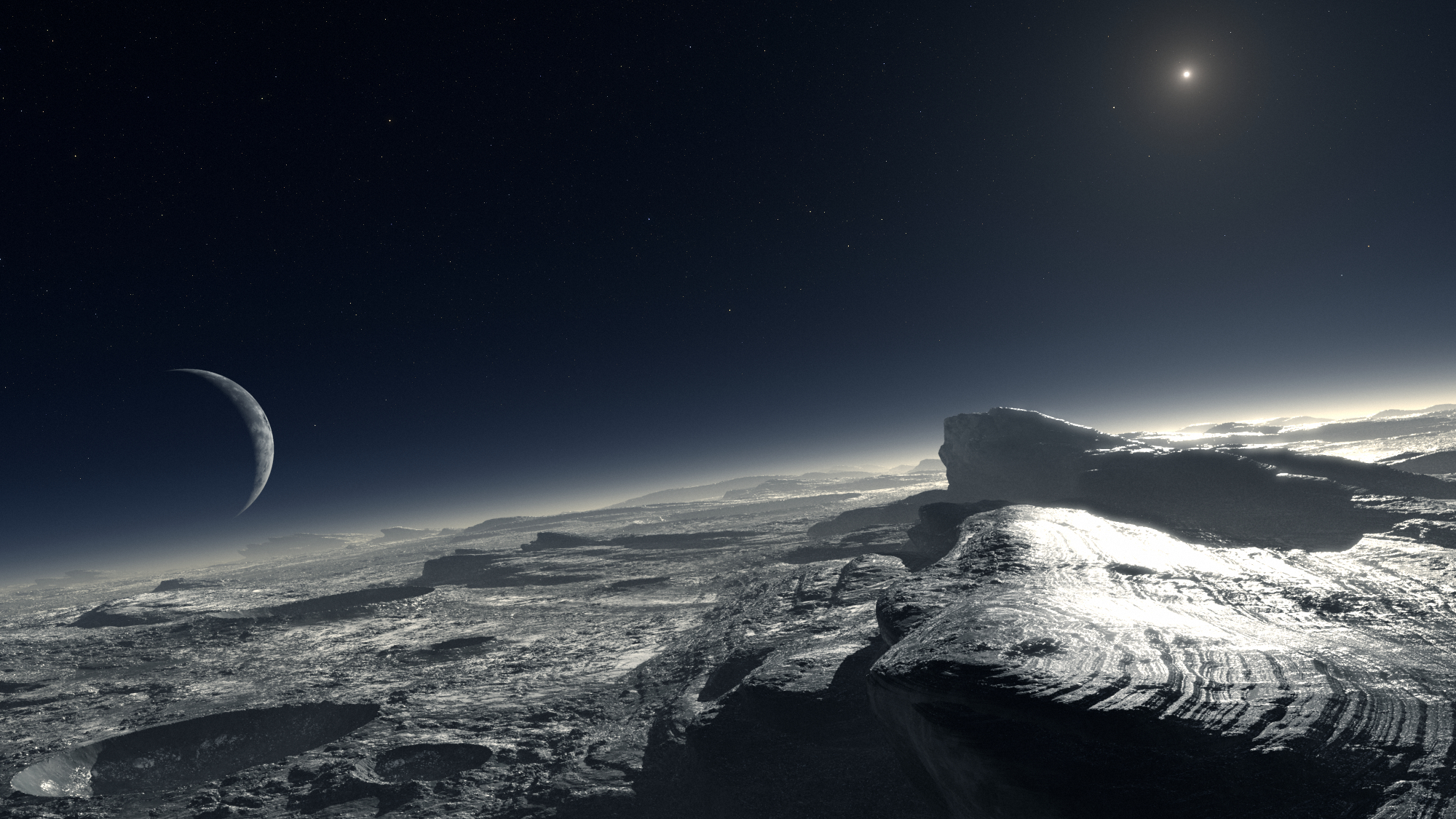
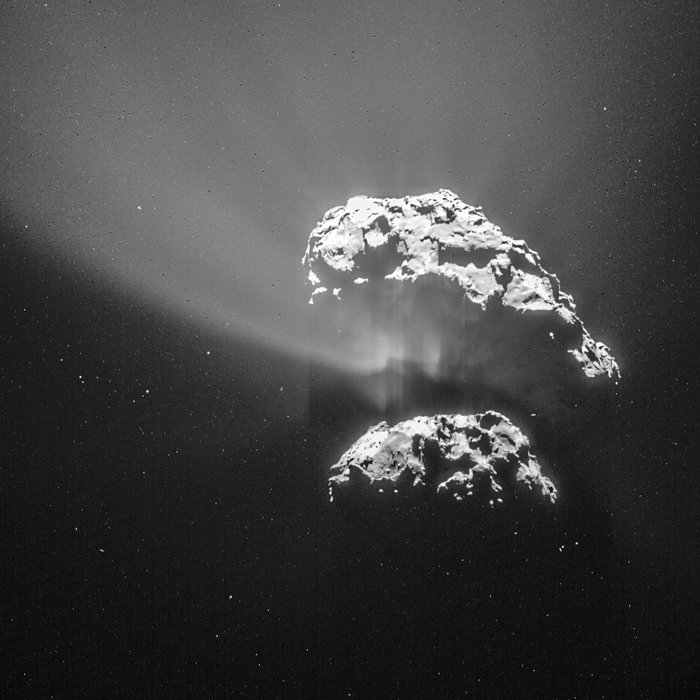

Always really interesting, Jan!
So did they lose track of the Philae lander as soon as it touched down?
At the first touchdown of Philae, the harpoons failed to fire, so the lander bounced back (two times). When it came to rest it started sending scientific data until its batteries were empty. Location is approximately known, but the lander has not been found yet on high-res pictures. It might be covered by dust… 🙁